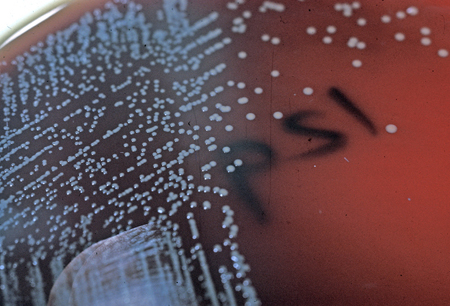Summary
Definition
History and exam
Key diagnostic factors
- history of contact with infected person
- fever or chills
- constitutional symptoms
- arthralgia
- joint swelling and tenderness
- hepatomegaly and/or splenomegaly
Other diagnostic factors
- nausea, vomiting, abdominal pain, constipation, diarrhea
- pallor
- lymphadenopathy
- dry cough
- chest signs
- testicular pain
- neck stiffness
- cranial nerve palsy or focal central nervous system deficit
- dullness to percussion, decreased air entry, crepitations
- red eye
- skin rashes
Risk factors
- ingestion of contaminated foods
- exposure to infected animal products
- inhalation of infected aerosols
- conjunctival contact with infected material
- occupation with potential for exposure to Brucella species
- travel to an endemic area
- cuts or abrasions in skin
- sexual contact with infected individual
- newborn or infant of infected mother
- recipient of blood products or of organ or tissue transplant
Diagnostic tests
1st tests to order
- blood culture
- serologic tests
- cerebrospinal fluid (CSF) analysis
- cerebrospinal fluid (CSF) culture
- synovial fluid analysis
- synovial fluid culture
- CBC
- liver function tests
- serum electrolytes
Tests to consider
- bone marrow culture
- tissue biopsy
- plain film x-rays of affected joints
- chest x-ray
- bone scan
- CT or MRI scan of spine
- CT or MRI scan of head
Emerging tests
- polymerase chain reaction for detection and diagnosis of Brucella species
- matrix-assisted laser desorption/ionization time of flight (MALDI-TOF) mass spectrometry
Treatment algorithm
uncomplicated disease
complicated disease
Contributors
Authors
Nicholas J. Beeching, MA, BM BCh, FRCP, FRACP, FFTM RCPS (Glasg), FESCMID, DCH, DTM&H
Consultant and Emeritus Professor of Tropical and Infectious Diseases
Royal Liverpool University Hospital
Liverpool School of Tropical Medicine
Liverpool
UK
Disclosures
NJB is partially supported by the National Institute of Health Research Health Protection Unit in Emerging and Zoonotic Infections at the University of Liverpool and the UK Health Security Agency. Views expressed in this topic are those of the contributor and do not necessarily represent the official position of the National Health Service, the National Institute for Health Research, the Department of Health, or the UK Health Security Agency. NJB is an author of references cited in this topic.
Alessandro Gerada, MD, MRCP, FRCPath
Consultant in Clinical Microbiology
Liverpool Clinical Laboratories
Royal Liverpool University Hospital
Liverpool
UK
Disclosures
AG is an author of several references cited in this topic.
Sherine Thomas, MBChB, MRCP, DTMH
Consultant in Infectious Diseases
Whipps Cross Hospital
London
UK
Disclosures
ST declares that she has no competing interests.
Peer reviewers
Mical Paul, MD
Infectious Diseases Consultant
Unit of Infectious Diseases
Rabin Medical Center
Beilinson Hospital
Petah-Tikva
Israel
Disclosures
MP declares that she has no competing interests.
Edward J. Young, MD
Professor of Medicine
Section of Infectious Diseases
Department of Medicine
Baylor College of Medicine
Houston
TX
Disclosures
EJY declares that he has no competing interests.
Peer reviewer acknowledgements
BMJ Best Practice topics are updated on a rolling basis in line with developments in evidence and guidance. The peer reviewers listed here have reviewed the content at least once during the history of the topic.
Disclosures
Peer reviewer affiliations and disclosures pertain to the time of the review.
References
Key articles
Centers for Disease Control and Prevention. Brucellosis reference guide: exposures, testing and prevention. Feb 2017 [internet publication].Full text
World Health Organization. Brucellosis in humans and animals. 2006 [internet publication].Full text
Yousefi-Nooraie R, Mortaz-Hejri S, Mehrani M, et al. Antibiotics for treating human brucellosis. Cochrane Database Syst Rev. 2012 Oct 17;10:CD007179.Full text Abstract
Reference articles
A full list of sources referenced in this topic is available to users with access to all of BMJ Best Practice.

Differentials
- Tuberculosis
- Malaria
- Typhoid infection
More DifferentialsGuidelines
- Clinical overview of brucellosis
- Brucellosis
More GuidelinesLog in or subscribe to access all of BMJ Best Practice
Use of this content is subject to our disclaimer